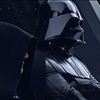| View previous topic :: View next topic |
| Author |
Message |
Whill
Dark Lord of the Jedi (Owner/Admin)

Joined: 14 Apr 2008
Posts: 10530
Location: Columbus, Ohio, USA, Earth, The Solar System, The Milky Way Galaxy
|
 Posted: Mon Dec 11, 2017 7:32 pm Post subject: Posted: Mon Dec 11, 2017 7:32 pm Post subject: |
 |
|
| CRMcNeill wrote: | At this point, I'm leaning more towards some rule limiting how many guns can be combined if a fighter or space transport gets in close enough to skim the larger ship's hull, which basically happens in all three of the first films: the Death Star attack, the attack run on the Avenger and the Battle of Endor.
Based on what we see in the films, there has to be a point where, no matter how many guns a ship has in a given fire arc, a small ship is just too close to bring them all to bear at once. So it doesn't really matter if the Death Star has 5,000 turbolasers in a given arc if only two or three of them can bear on a target at any given time. And it becomes even more consequential if you can disable enough of them in a specific area to create a dead zone where no defensive weaponry can come to bear at all. I'm pretty sure that was one of the reasons for all the strafing runs during the opening phases of the Battle of Yavin. |
One criticism of ANH I came across one time was that there isn't any reason that the Rebels had to fly down in the trench before taking a shot at the exhaust port. Maybe they went down in the trench to get out of the line of fire of all the turbolasers in the area up on the surface. Yes, there were guns down in the trench too, but flying down there they at least removed a bunch of others out of the equation. And then of course the guns down in the trench stopped firing when Vader entered the trench behind them. Of course the Falcon probably took a lot of fire for them to zoom in from above the exhaust port, but maybe several guns in the area had been taken out earlier by the Rebels.
I'd like to see what you come up with as far as mechanics for the general flying close to get 'under' the fire arc. On the shield side, can smaller ships ships just fly through larger ship shields? At Yavin, the Rebels just passed through the Death Star "magnetic shields" without too much trouble, and there didn't seem to be any concern or hindrance with the Falcon buzzing the bridge of the Avenger. Endor is more strait forward because he Death Star was protected by the shield generated on the moon that they simply could not penetrate until the generator was destroyed.
_________________
*
Site Map
Forum Guidelines
Registration/Log-In Help
The Rancor Pit Library
Star Wars D6 Damage |
|
| Back to top |
|
 |
CRMcNeill
Director of Engineering


Joined: 05 Apr 2010
Posts: 16414
Location: Redding System, California Sector, on the I-5 Hyperspace Route.
|
 Posted: Mon Dec 11, 2017 11:02 pm Post subject: Posted: Mon Dec 11, 2017 11:02 pm Post subject: |
 |
|
| Naaman wrote: | Now, imagine all 20 turbo lasers fire. Only 3 or 4 can take credit for the hit, but all those other lasers in coming limit his options for evasive maneuvers. If he dodges out of the way of the few that actually locked on/targeted him, he still could maneuver right into one that was "suppressing" him.
In this case, you could rule that when combining fire, you can take a maximum of +X on damage. The rest has to be taken on the attack roll itself. If the attack roll is high enough, then the combined damage is rolled. Otherwise, only one laser hits. If the dodge roll is high enough, the pilot expertly maneuvers through that round of fire... I left out actual difficulty values pending further discussion of the concept. |
This is sort of what already happens. By combining the fire of all 20 turbolasers in an arc, it generates anywhere from a +5D to +7D coordination bonus (depending on which method you use) to Fire Control, which is enough to mostly offset or completely overcome the Scale modifier. It ends up with the scenario as you described, with the ship taking 1-2 hits out of 20 or so.
_________________
"No set of rules can cover every situation. It's expected that you will make up new rules to suit the needs of your game." - The Star Wars Roleplaying Game, 2R&E, pg. 69, WEG, 1996.
The CRMcNeill Stat/Rule Index
|
|
| Back to top |
|
 |
Bren
Vice Admiral


Joined: 19 Aug 2010
Posts: 3868
Location: Maryland, USA
|
 Posted: Tue Dec 12, 2017 12:59 am Post subject: Posted: Tue Dec 12, 2017 12:59 am Post subject: |
 |
|
I agree with the sentiment expressed. Avoiding defensive fire by skimming the surface of a large ship or battle station (nape of the ship flying?, I think Babylon 5 called this skin dancing) is consistent with multiple Star Wars films in both prequels and original movies. And intuitively it seems to make sense given the way spaceship physics and gunnery works in the SWU. So there should be a way to do that in a game and for that to decrease the chance of getting blasted by guns. I'm not convinced a method is necessary other than GM narrative fiat, but I know several folks really prefer a method or mechanic. So....
One method would be to use something like the bid/raise method for chases in the old James Bond 007 game from Mayfair. (Caveat: I don't recall the exact method in the game.) What I am thinking is that the closer you get to the actual surface of a large ship or station the more difficult it is for the guns to track and come to bear. Rather than an involved method or series of equations, I instead suggest using something like the method for a Called Shot.
Method for Nape of the Ship Flight
Let the pilot (typically a PC) who initiates this maneuver decide how close they want to come to the surface. Based on this they get a difficulty modifier to their piloting roll as a terrain modifier (and they must roll each round vs. this difficulty). Failure results in a maneuver mishap similar to failing any maneuver difficulty.
The same modifier now applies to the difficulty of the big ship or station for targeting the pilot's ship.
Option 1: Allow the pilot to choose the any difficulty. (They set the difficulty first, then roll after.)
Option 2: As above, but the difficulty must be at least 1D and no more than 8D.
Option 3: Use preset difficulties based on how far you are from the surface.
+1D Close
+4D Really close
+8D Too close for normal reflexes
Note that these are the same difficulties used for called shots.
We see two other things associated with using those tactics.
1. Attempting nape of the ship flying is dangerous. Pilots who aren't the main characters or their really good friends often crash while attempting this. Poor Porkins.
2. Because of this, ships trying to follow or target a ship using nape of the ship flight must either match the difficulty of the ship they are following or break off their pursuit/attack. If the pursuer fails their piloting roll the same chance for mishap accrues. |
|
| Back to top |
|
 |
CRMcNeill
Director of Engineering


Joined: 05 Apr 2010
Posts: 16414
Location: Redding System, California Sector, on the I-5 Hyperspace Route.
|
 Posted: Tue Dec 12, 2017 2:56 am Post subject: Posted: Tue Dec 12, 2017 2:56 am Post subject: |
 |
|
Hmm. I can see this as part of a broader possibility, but rather than using the Called Shot rules, I'd say being in close proximity to a larger object (planet, capital ship, asteroid, Death Star, etc) counts as Cover, and the closer you get to Cover, the greater the bonus you have to avoid getting hit. Of course, the closer you get, the greater the likelihood of running into something (expressed as higher Terrain Difficulty). Something like so:Terrain Difficulty Modifier = Cover Bonus
+5 = +1D
+10 = +2D
+15 = +4D
+30 = +8D This is where TIE Fighters would be superior to point defense weaponry because they could (and do, according to film evidence) operate at a higher altitude (read: lower Terrain Difficulty) using look-down shoot-down tactics...
_________________
"No set of rules can cover every situation. It's expected that you will make up new rules to suit the needs of your game." - The Star Wars Roleplaying Game, 2R&E, pg. 69, WEG, 1996.
The CRMcNeill Stat/Rule Index
|
|
| Back to top |
|
 |
CRMcNeill
Director of Engineering


Joined: 05 Apr 2010
Posts: 16414
Location: Redding System, California Sector, on the I-5 Hyperspace Route.
|
 Posted: Tue Dec 12, 2017 3:16 am Post subject: Posted: Tue Dec 12, 2017 3:16 am Post subject: |
 |
|
I'm reminded of Red Leader at Yavin, telling his pilots to "Stay low!"
_________________
"No set of rules can cover every situation. It's expected that you will make up new rules to suit the needs of your game." - The Star Wars Roleplaying Game, 2R&E, pg. 69, WEG, 1996.
The CRMcNeill Stat/Rule Index
|
|
| Back to top |
|
 |
ZzaphodD
Rear Admiral


Joined: 28 Nov 2009
Posts: 2426
|
 Posted: Thu Dec 14, 2017 5:44 pm Post subject: Posted: Thu Dec 14, 2017 5:44 pm Post subject: |
 |
|
The commander of the team rolls Command skill against a target number depending on the number of attackers he want to coordinate. Failure means no coordination possible.
In our coordinating rules coordinating is normally an action.
Unless the commander beats a certain target number higher than the basic difficulty(lost to me now), in case it's a free action.
In any case the Command skill die number determines the maximum number of coordinated attackers.
Storm Trooper special rule: They can always coordinate as a free action and will always succeed up to twice the Command dice number of attackers.
_________________
My Biggest Beard Retard award goes to: The Admiral of course.. |
|
| Back to top |
|
 |
CRMcNeill
Director of Engineering


Joined: 05 Apr 2010
Posts: 16414
Location: Redding System, California Sector, on the I-5 Hyperspace Route.
|
 Posted: Thu Dec 14, 2017 5:55 pm Post subject: Posted: Thu Dec 14, 2017 5:55 pm Post subject: |
 |
|
Welcome back, Z.
Per the 2R&E Sourcebook (pg. 83), a failed roll can still generate a coordination bonus; it's just reduced by 1 for every point by which the commander failed the Command roll (to a minimum bonus of 0)
_________________
"No set of rules can cover every situation. It's expected that you will make up new rules to suit the needs of your game." - The Star Wars Roleplaying Game, 2R&E, pg. 69, WEG, 1996.
The CRMcNeill Stat/Rule Index
|
|
| Back to top |
|
 |
|






